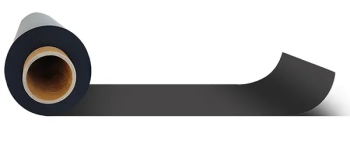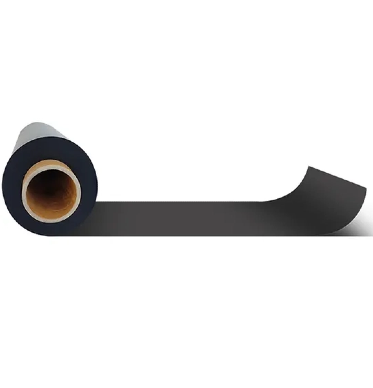In an era where environmental protection has become a global priority, industries across the board are actively seeking sustainable solutions. Among various materials, Liquid Urethane Foam has emerged as a key player, yet its environmental impact has been a subject of both concern and exploration. This article delves into the environmental aspects of Liquid Urethane Foam, exploring its traditional environmental challenges, innovative improvements, real - world applications, and future prospects. Hubei Xiangyuan New Material Technology Inc., with its commitment to material innovation, is at the forefront of this exploration. For more information, please visit our website at www.xyfoams.com.
Traditional Production of Liquid Urethane Foam and Environmental Issues
The traditional production of Liquid Urethane Foam relies on raw materials such as isocyanates and polyether polyols. Isocyanates, a crucial component, are derived from petrochemical sources. They are highly reactive but also pose significant health and environmental risks. Isocyanates are toxic and can cause respiratory problems in humans. In addition, during the production process, they are volatile, releasing harmful substances into the air, which contributes to air pollution.
The production of Liquid Urethane Foam also generates a considerable amount of wastewater. Chemical residues in the wastewater, if not properly treated, can contaminate water sources, affecting aquatic life and potentially entering the human food chain. Moreover, the energy - intensive nature of traditional production processes further exacerbates the environmental burden, consuming large amounts of non - renewable energy resources.

Environmental Improvement Measures and New Technologies
Raw Material Substitution
One of the most promising directions for environmental improvement is the substitution of traditional raw materials with bio - based alternatives. Bio - based materials such as vegetable oils, lignin, and starch have been increasingly studied and applied in the production of Liquid Urethane Foam. Vegetable oils, for example, are renewable resources. By modifying vegetable oils, they can be used to prepare polyurethane foams, reducing the dependence on fossil - based raw materials. These bio - based raw materials not only help conserve non - renewable resources but also have the potential to be biodegradable, minimizing the long - term environmental impact of the foam at the end of its life cycle.
There is also ongoing research into new types of more environmentally friendly polyols and isocyanate substitutes. Although some of these alternatives may currently face challenges in terms of cost and performance, continuous research and development are expected to overcome these obstacles, making them more viable in the future.
Process Optimization
The use of green solvents is another important aspect of process optimization. Replacing traditional organic solvents with water or other low - volatile, low - toxicity solvents significantly reduces the emission of volatile organic compounds (VOCs). This not only improves the working environment during production but also helps protect the atmospheric environment.
Optimizing reaction conditions is equally crucial. By reducing reaction temperatures, shortening reaction times, and improving reaction efficiency, energy consumption can be effectively reduced. For example, new catalytic systems are being developed to accelerate the reaction rate under milder conditions, thereby reducing the overall energy demand of the production process and minimizing the generation of by - products and pollutants.
Recycling and Circular Utilization Technologies
Recycling technologies for Liquid Urethane Foam are also evolving. Physical recycling methods, such as melt reprocessing, can directly reuse the foam in certain applications after proper treatment. Chemical recycling, on the other hand, involves depolymerization of the foam into its basic components, which can then be repolymerized to form new foams.
However, recycling technologies still face challenges in practical applications. For physical recycling, the quality of recycled products may be lower than that of virgin materials, limiting their application scope. Chemical recycling requires complex processes and high - tech equipment, which increases the cost. Nevertheless, continuous research is being carried out to address these issues, and the successful implementation of recycling technologies will play a vital role in reducing waste and promoting resource circulation.
Application Cases of Environmentally Friendly Liquid Urethane Foam
In the Construction Industry
In the construction industry, environmentally friendly Liquid Urethane Foam has shown great potential. As an insulation and sound - proofing material, it can significantly reduce the energy consumption of buildings. For example, in a large - scale commercial building project in Europe, the use of bio - based Liquid Urethane Foam for wall insulation reduced the building's heating and cooling energy consumption by 30% compared to traditional insulation materials.
Moreover, its low - toxicity and low - emission characteristics ensure good indoor air quality, creating a healthier living and working environment. These features also help buildings meet the requirements of green building standards, promoting the sustainable development of the construction industry.
In the Packaging Industry
In the packaging industry, especially for food and electronic products, environmentally friendly Liquid Urethane Foam has become an ideal alternative to traditional packaging materials. It provides excellent cushioning performance, protecting products during transportation and storage. For instance, a well - known electronics manufacturer has started using biodegradable Liquid Urethane Foam for packaging its smartphones. This not only ensures the safety of the products but also reduces the environmental impact caused by packaging waste.
By using environmentally friendly packaging materials, companies can also enhance their corporate social responsibility image, meeting the increasing environmental requirements of consumers and regulatory authorities.
Challenges and Future Prospects
Challenges
Despite its great potential, environmentally friendly Liquid Urethane Foam still faces several challenges. Cost is a major obstacle. Bio - based raw materials and advanced production processes often come with higher costs compared to traditional ones. This cost difference makes it difficult for environmentally friendly products to compete in the market, especially when price - sensitive consumers and industries are concerned.
In terms of performance, some environmental improvements may have a certain impact on the original properties of the material. For example, bio - based foams may have lower strength or durability compared to traditional foams in some cases. Balancing environmental friendliness with material performance remains a key issue that needs to be addressed.
Future Prospects
Looking ahead, the future of environmentally friendly Liquid Urethane Foam is promising. With the continuous advancement of technology, more efficient raw material substitution methods are expected to be developed, reducing costs while maintaining or even improving performance. The recycling system will also become more complete, further enhancing the circularity of resources.
As environmental awareness continues to rise globally, the demand for sustainable materials will only increase. Environmentally friendly Liquid Urethane Foam is likely to be widely used in more fields, making significant contributions to the green development of various industries. It is hoped that more enterprises and research institutions will increase investment in research and development, promoting technological innovation in this field.

Conclusion
In conclusion, although Liquid Urethane Foam has faced environmental challenges in its development, with continuous efforts in research and innovation, its environmental potential is enormous. At Hubei Xiangyuan New Material Technology Inc., we are committed to exploring and promoting the development of environmentally friendly Liquid Urethane Foam. We invite you to visit www.xyfoams.com to learn more about our products and technological advancements, and join us in creating a more sustainable future.

















